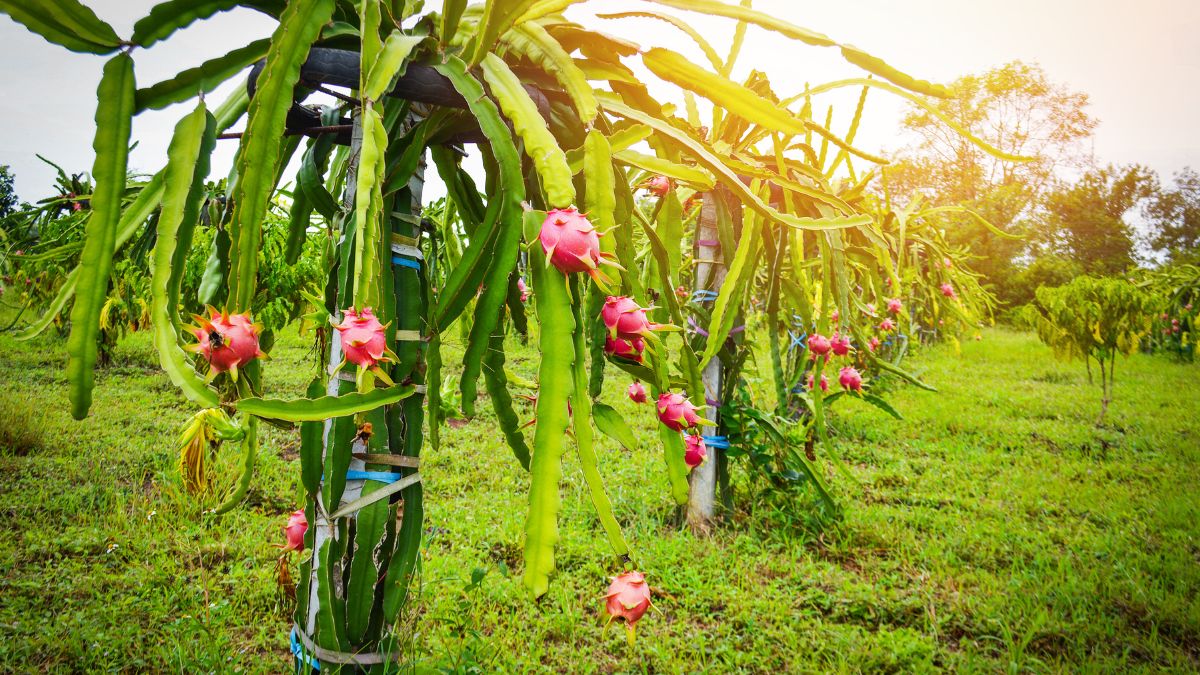Introduction
The Dragon Plant, scientifically known as Dracaena, is a popular houseplant cherished for its dramatic foliage and ease of care. This guide will walk you through everything you need to know to grow and care for this stunning plant.

Overview of the Dragon Plants
Dracaena is a genus of about 120 species of trees and succulent shrubs. The most common varieties grown as houseplants include Dracaena marginata, Dracaena fragrans, and Dracaena reflexa. These plants are native to Africa, Madagascar, and other tropical regions, where they thrive in warm, humid conditions.
Choosing the Right Dragon Plant Variety
When selecting a Dragon Plant for your home, consider the size of the plant and its care requirements. Dracaena marginata, also known as the Madagascar dragon tree, is tall and slender, making it ideal for tight spaces. Dracaena fragrans, or the corn plant, has broad, variegated leaves and can grow quite large. Dracaena reflexa, or the song of India, has narrow, arching leaves with yellow stripes.
Planting Your Dragon Plant
Choose a pot with drainage holes to prevent waterlogging when planting your Dragon Plant. Use a well-draining potting mix, such as a blend of peat moss, perlite, and sand. Plant the Dracaena at the same depth it was in its original container and water thoroughly.
Caring for Your Dragon Plant
- Watering: Allow the top inch of soil to dry out between waterings, and never let the plant sit in water.
- Light Requirements: Dragon Plants prefer bright, indirect light but can tolerate lower light conditions.
- Temperature and Humidity: Keep your Dracaena in a room with temperatures between 65°F and 80°F and moderate humidity levels.
- Soil Requirements: Use a well-draining, acidic soil mix for optimal growth.
- Fertilizing: Feed your Dragon Plant a balanced liquid fertilizer monthly during the growing season.
Pruning and Propagating Your Dragon Plant
Prune back any leggy or yellowing stems to maintain your Dragon Plant’s shape. You can also propagate Dracaena by rooting stem cuttings in water or moist soil.
Common Issues and How to Solve Them
- Yellowing Leaves: Usually caused by overwatering or insufficient light. Adjust your watering schedule and move the plant to a brighter location.
- Brown Tips: Indicates dry air or salt buildup in the soil. Increase humidity around the plant and flush the soil with water to remove excess salts.
- Pests: Spider mites and mealybugs can infest Dragon Plants. Use insecticidal soap or neem oil to treat the plant.
Benefits of Having a Dragon Plant
Aside from its aesthetic appeal, the Dragon Plant has air-purifying qualities, removing toxins from the air and improving indoor air quality. It is also known to boost mood and productivity.
Conclusion
In conclusion, the Dragon Plant is a versatile, attractive houseplant that can thrive in various conditions. Following the tips outlined in this guide, you can successfully grow and care for your Dracaena, adding beauty and health benefits to your home.

FAQs
Q. How often should I water my Dracaena?
A. Water your Dracaena when the top inch of soil feels dry. Depending on your home’s humidity and light levels, this may be every 1-2 weeks.
Q. Can I keep my Dracaena outdoors?
A. Dracaenas are best suited for indoor environments, as they prefer stable temperatures and indirect light. They can be placed outdoors in a shaded area during warm weather but should be brought inside before temperatures drop below 50°F (10°C).
Q. What should I do if my Dracaena is growing too tall?
A. If your Dracaena is getting too tall or leggy, you can prune the top portion of the stem to encourage branching and a more compact growth habit. Use clean, sharp scissors or pruning shears to cut just above a leaf node.
Q. Are Dracaenas toxic to pets?
A. Yes, Dracaenas are toxic to cats and dogs if ingested. Keep them out of reach of pets or choose non-toxic houseplants if you have pets.
Q. How do I know if my Dracaena needs repotting?
A. If your Dracaena has outgrown its current pot or the roots are starting to become root-bound, it’s time to repot. Look for roots circling the bottom of the pot or emerging from the drainage holes as signs that your plant needs a larger container.
